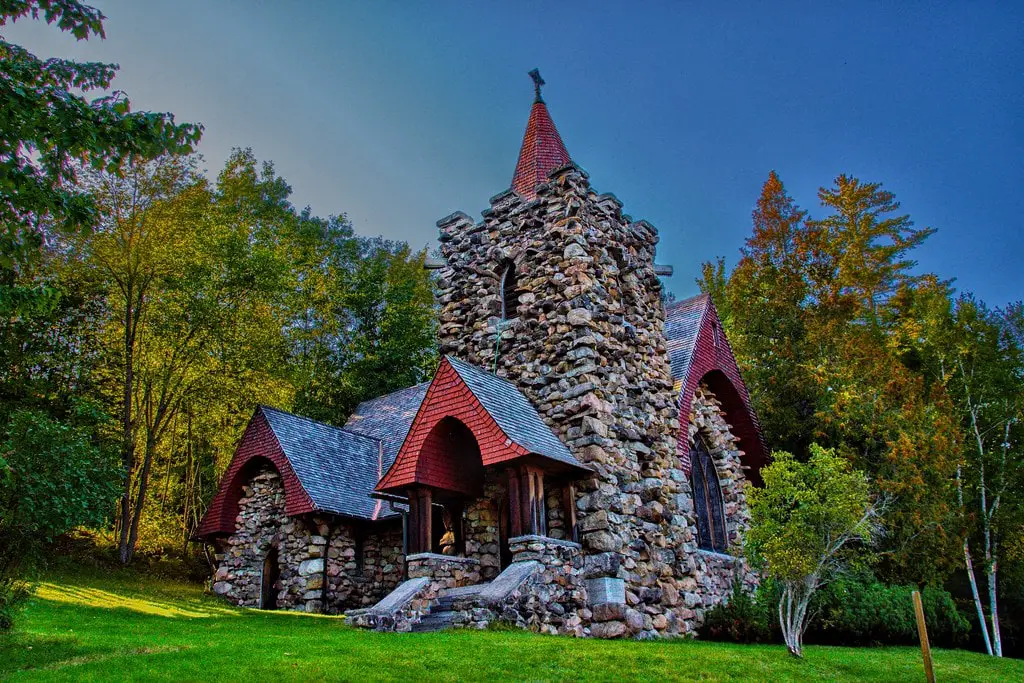Trudeau Sanatorium: The Founding Years
It was the year 1885 when Dr. Edward Livingston Trudeau established the Adirondack Cottage Sanitarium, nestled in the beautiful landscapes of Saranac Lake, New York.
Born into a family of physicians, Trudeau was no stranger to the medical profession. Still, his experience with tuberculosis shaped his career and led him to establish this famous sanatorium.
Tuberculosis was a dreaded disease in the late 19th century, and Trudeau fell victim to it in 1873.
Following the conventional wisdom of the time, he sought a change of climate and found his health improving in the clean, crisp air of the Adirondack Mountains.
Trudeau founded the sanatorium in Saranac Lake, New York, inspired by Prussian Dr. Hermann Brehmer’s success in treating tuberculosis with the “rest cure” in similar climatic conditions.
The first patients were two sisters, former factory workers from New York City, who were treated in a quaint one-room cottage named “Little Red.”
The Golden Era
The sanatorium was a beacon of hope for those suffering from tuberculosis, and it quickly grew in both reputation and size.
It was a place not just for treatment but also for education, and it established a nursing school and the Trudeau School of Tuberculosis.
These institutions offered training for nurses and physicians eager to learn the latest treatment methods for the disease.
The sanatorium’s patients included individuals from all walks of life, from renowned authors and physicians to baseball players.
However, the demand for treatment was so high that the sanatorium could not accommodate everyone.
This led to the growth of smaller, family-run “cure cottages” in the surrounding area and the construction of larger sanatoria in nearby regions.
Saranac Lake became a haven for those seeking respite from tuberculosis, its popularity growing yearly.
After Trudeau died in 1915, the institution’s name was changed to the Trudeau Sanatorium, reflecting changes in conventional usage.

Daily Life in the Trudeau Sanatorium
Life at the Trudeau Sanatorium was structured around two guiding principles: organization and optimism. All daily activities, from the most mundane to the most intellectual, were regulated.
Patients spent their days wrapped in blankets, lounging on patios or by open windows, soaking up the sunshine and breathing in the fresh air.
The aim was to instill a positive mindset in the patients, believing they could overcome the disease that had gripped them.
Despite the disciplined lifestyle, the sanatorium was a place of camaraderie and learning.
Here, the entire specialty of pulmonary medicine took root, with many physicians, themselves patients at the sanatorium, developing interests in other lung diseases such as asthma, emphysema, and lung cancer.

The Decline and Closure
The arrival of effective antibiotic treatments for tuberculosis in the 1950s marked the beginning of the end of the sanatorium movement.
The cure rate in sanatoriums was no better than that of home treatment, and studies showed that antibiotic treatment was just as effective when administered at home.
Consequently, the need for sanatoriums declined rapidly, and they began to close their doors.
The Trudeau Sanatorium was not immune to this trend. It closed in 1954, and the property was sold in 1957.
The funds from the transaction were channeled into establishing a new medical research center, the Trudeau Institute, which commenced operations in 1964.
Some sanatorium buildings still stand, while others have been torn down or renovated.
Today, Historic Saranac Lake, a local nonprofit organization, offers tours of the remaining facilities, serving as a reminder of the sanatorium’s historical significance.

Conclusion
The Trudeau Sanatorium (Adirondack Cottage Sanitarium) was a testament to a unique period in medical history when a change of climate and a structured lifestyle were considered the best treatments for a deadly disease.
Despite the sanatorium’s closure and the dramatic advances in medical science since then, the legacy of Dr. Edward Livingston Trudeau lives on in the field of pulmonary medicine and in the hearts of those who remember the sanatorium’s heyday.

